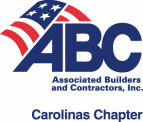Hi folks! As the kids would say, “it’s been a minute.” But I’m back on the blogging beat and eager to share new construction law content with you in the weeks and months ahead.
While perusing the Fall 2018 newsletter issued by the North Carolina Licensing Board for General Contractors during my lunch break this afternoon, I was reminded of certain regulatory changes approved by the N.C. Rules Commission that affect North Carolina general contractors. Ten rule changes were put into effect on April 1 (no joke!), and two additional changes took effect on September 1. Check out the third page of the newsletter I’ve linked for a quick summary.
The changes, among other things, establish 70 as a passing grade for the licensing exam, require that a licensee be in good standing with the Secretary of State’s office before a license is renewed, and limit the number of entities for which a person may serve as qualifier to two. There are two additional changes that I’d like to highlight here:
First, the rules now clarify that if a joint venture doesn’t hold a general contracting license of its own, each member of the JV must be properly licensed to practice general contracting. Since the consequences of performing construction work in North Carolina without a license can be severe, contractors bidding and contracting for work in a joint venture setting are encouraged to comply strictly with this regulation.
Second, the rules now provide that all general contractors must include their license numbers “on all contracts, advertisements, and licensee websites.” Construed broadly, this regulation arguably requires GCs to display their license numbers everywhere–proposal, bids, PowerPoint presentations, prime contracts, subcontracts, purchase agreements, bonds, websites, social media pages, email signature blocks, brochures and other marketing collateral, letterhead, project signage, equipment, vehicles, business cards–you name it. To minimize the risk of disciplinary action against your general contracting license, you would be well served to begin displaying your license number ubiquitously, and immediately.











